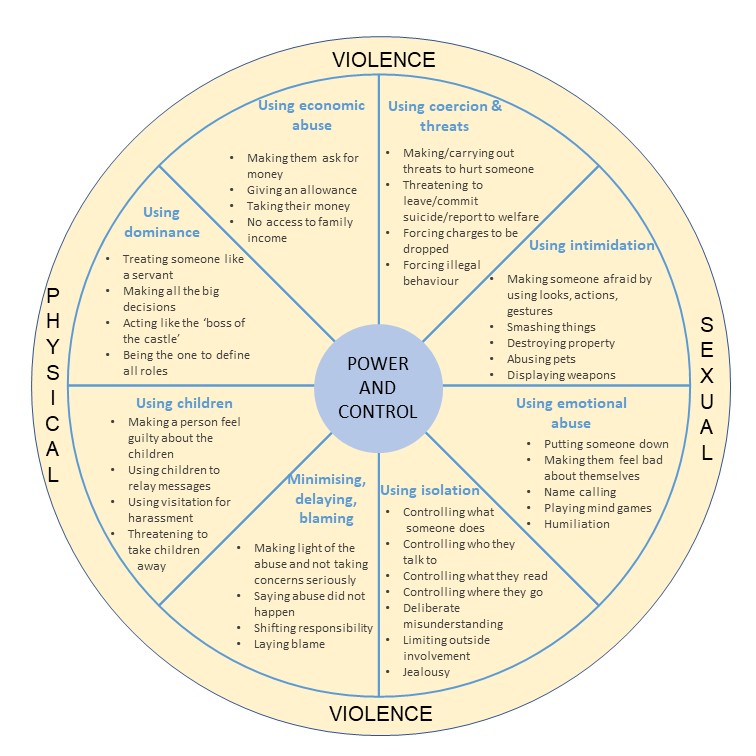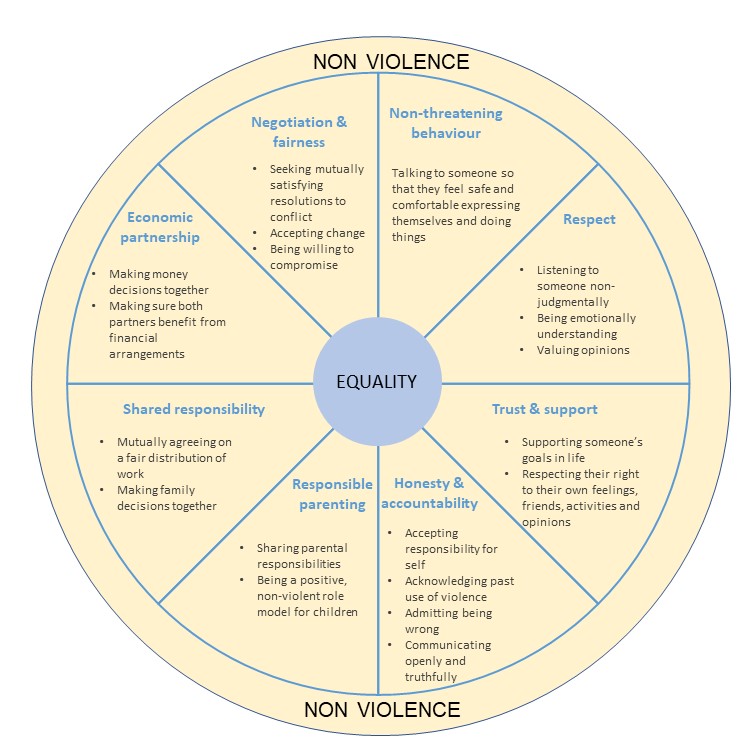Need help now?
If you are in immediate danger dial 111. If you are not in immediate danger, but need help call 0800 28482 669 to speak to one of our team.
What is family violence?
Family violence has many names. It is commonly known as domestic violence, family harm, or domestic abuse.
At Aviva, we favour the term ‘family violence’, but ultimately all of these labels describe the same thing.
Family violence is any behaviour designed to gain power and control over a spouse, partner, child or other intimate family member. Many people associate the word ‘violence’ with physical assaults, but family violence is not limited to physical abuse.
Relationship Check
Sexual violence is any type of sexual contact or behaviour that you do not willingly and explicitly agree to. It includes a wide range of behaviours, and the words used to describe these are varied. They can include rape, attempted rape, sexual violation, coerced sexual activity, and sexual harassment or threats (including digital harassment and threats).
Physical assault is just one kind of violence. Others include:
- Using coercion and threats
- Using intimidation
- Emotional abuse
- Isolation
- Minimising, denying and blaming
- Using children
- Economic abuse
- Using/asserting dominance over another person
- Sexual assault/abuse
The wheel of Power & Control explains the types of violence in more depth.


The impact of abuse and violence on adults – long and short term:
Emotional
- Increased feelings of shame and guilt
- Confusion
- Loss of self-confidence
- Feelings of hopelessness
- Loss of self-esteem
- Loss of dreams/passion
- Increased feelings of rage
- Feeling powerless
Physical Heath
- Increased Injury Risk
- Death
Mental Health
- Depression
- Psychosis
- Post Traumatic Stress Disorder
- Anxiety Disorder
- Stress related disorder
- Behavioural changes
- Self-harm
- Eating disorders
- Substance abuse
- Addictive behaviours
Child abuse is family violence. Children who live in a home where there is violence are known to be significantly more at risk of being the victims of physical, sexual and psychological abuse and neglect than any other children.
Some of the impacts on children include:
- an inability to concentrate or engage appropriately in learning or play activities
- becoming withdrawn, uncommunicative, isolated
- finding it difficult to form attachments and maintain good relationships with adults and other children
- trouble sleeping, or settling down
- showing disruptive behaviours - tantrums, bullying, aggression
- excessive fears, shyness
- unhappiness, worries and anxiety
- demanding excessive attention
- physical or emotional neglect
- being unable to confide in or trust other adults
- A third of New Zealand adults (30.2%) have experienced physical and sexual violence offences committed by an intimate partner in their lifetime.
- 56% of women experience intimate partner violence (including psychological abuse) in their lifetime. This is higher for wāhine Māori.
- One in three women (36%) and one in eight men (13%) have experienced one or more sexual assaults in their lifetime.
- Violence is hidden and often goes unreported. Only 6.6% of sexual violence is reported to police.
- Women experience more types of violence, more frequently and severely than men. More women reported serious injuries, fear, and physical and mental health impacts following intimate partner violence.
- 74% of people killed by their partners between 2007 and 2021 were women.
- Pacific peoples disproportionately experience material hardship, which can exacerbate some forms of violence. Pacific children are 4.8 times more likely to die from child abuse and neglect than children of other ethnicities.
- Wāhine Māori are more likely to be subjected to family violence or sexual violence than any other ethnicity or gender. One in two (49%) Māori women experience physical or sexual intimate partner violence in their lifetime, compared with one in three (31%) for all women.
- Discrimination and stigma are drivers of violence towards LGBTQIA+ people and create barriers for effective help. Almost one in two LGBTQIA+ people (45%) have experienced sexual assault.
- Disabled people experience violence in different ways and at higher rates than other groups. 18% of disabled young people were hit or physically hurt in the place they usually live.
- 44% of disabled people have experienced sexual assault.
- When children and young people experience violence and harm it leads to poorer outcomes and limits their potential. One in ten children and young people aged 12-18 were physically hurt by adults at their home in the past year.
- 56% of victims of sexual assault are between 15 and 29 years old.
- In ethnic communities, violence can take distinctive cultural forms, including dowry and ‘honour’ related violence, forced and underage marriage, and female genital mutilation. 17% of people in ethnic communities experienced controlling behaviours by a family member in the past year.
- Violence experienced by older people is often not visible because of poor health or disability, being socially isolated, or dependent on others for care. As many as one in ten older people in New Zealand will experience some kind of elder abuse which includes physical, sexual, psychological, and/or economic abuse and/or controlling behaviours.
- Over their lifetimes, 1 in 8 men (12.5%) have experienced sexual assault.
Statistics are taken from Te Aorerekura Action Plan 2025-2030. Breaking the Cycle of Violence.
Sources:
- NZCVS Data Table 2023 (Cycle 6) Sexual vilence and family offences
- J. Fanslow, B. Mellar, P. Gullivar, & T McIntosh (2023). Ethnic-specific prevalence rates of intimate partner violence against women in New Zealand. Australian and New Zealand Journal of Public Health. 47(6), 100105.
- NZCVS Data Tables 2023 (Cycle 6) Sexual Violence and Family Offences.
HELP Auckland Preventing Sexual Abuse. Supporting Survivors Sexual-Abuse-Statistics-September-2023.pdf
- Five years of insights on crime and victimisation in Aotearoa poster (2023)
- Fanslow, Malihi, Hashemi, et al. (2022). Prevalence of interpersonal violence against women and men in New Zealand: results of across-sectional study. Australian and New Zealand Journal of Public Health, Volume 46(2).
- New Zealand NZ Police (2024). NZ Police Statistics on Homicide Victims in New Zealand 2007-2021: A Summary of Statistics about Victims of Murder, Manslaughter, and Infanticide. Wellington: New Zealand NZ Police
- Family Violence Death Review Committee (2014). Fourth Annual Report. January 2013 to December 2013. Wellington: Family Violence Death Review Committee.
- Fanslow, Mellar, Gulliver, McIntosh (2023) Ethnic-specific prevalence rates of intimate partner violence against women in New Zealand, Australian and New Zealand Journal of Public Health, 47(6).
- New Zealand Crime and Victims Survey, Cycle 6, 2023. Ministry of Justice.
- What About Me? National Youth Health and Wellbeing Survey, 2021. Ministry of Social Development.
- New Zealand Crime and Victims Survey, Cycle 6, 2023. Ministry of Justice.
- What About Me? National Youth Health and Wellbeing Survey, 2021. Ministry of Social Development.
- New Zealand Crime and Victims Survey, Cycle 6, 2023. Ministry of Justice.
- New Zealand Crime and Victims Survey, Cycle 6, 2023. Ministry of Justice.
- https://officeforseniors.govt.nz/our-work/raising-awareness-of-elder-abuse/
- New Zealand Crime and Victims Survey Cycle 3 (2023), Ministry of Justice
Access Support
If you, or someone you know, is experiencing family violence, it’s important to access the right support.
• Call 0800 28 48 26 or (03) 378 3847
• Email [email protected]
• If you are an external agency wanting to refer a client you can find our referral forms on the 'I am a Professional' page.
Relationship Check - Quiz



